The history of the all-wheel-drive Camry 70 comes precisely from the American market, as the trend for four-wheel-drive family cars began to gain momentum with the advent of crossovers. Undoubtedly, the niche of cars in the sedan body has not gone anywhere, but all-wheel drive version of Toyota Camry is a consequence of the desire of consumers.
Camry 70 with all-wheel drive
During the development of the Camry 70, the idea of all-wheel drive was rejected by engineers. After the car went into production, first of all, American customers of car dealerships and dealers themselves raised the question of a four-wheel drive version. Under pressure from buyers, who are characterized by the departure from family sedans to the crossover class, the car giant in the face of the U.S. representative office decided to make changes. The Michigan design bureau was tasked with developing a version of the Camry 70 with all-wheel drive.
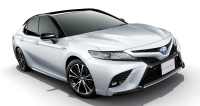 The designers had to rethink the shape of the floor panel to create a Toyota Camry with all-wheel drive, since it was impossible to place the cardan and rear axle drive with the former shape. It was decided to put a 2.5-liter four-cylinder powertrain with 202 horsepower. For the Camry AWD, the RAV4 was used as a starting point, and in this case, the car for the U.S. market. Despite the fact that on paper the front-wheel-drive Camry and RAV4 engines are the same, there are nuances that can be used to distinguish them.
The designers had to rethink the shape of the floor panel to create a Toyota Camry with all-wheel drive, since it was impossible to place the cardan and rear axle drive with the former shape. It was decided to put a 2.5-liter four-cylinder powertrain with 202 horsepower. For the Camry AWD, the RAV4 was used as a starting point, and in this case, the car for the U.S. market. Despite the fact that on paper the front-wheel-drive Camry and RAV4 engines are the same, there are nuances that can be used to distinguish them.
The rear axle and multilever design of the Toyota Camry 70 AWD are also inherited from the RAV4, but in a modified form. The parking brake has also changed, it is now electronic. Gas tank has changed the shape and became around the cardan shaft. The passenger sofa is taken from the hybrid Camry. It is lifted to accommodate a different battery / tank shape. The volume of the luggage compartment remains the same.
How Dynamic Torque Control AWD Works
A characteristic name for Toyota Camry vehicles with all-wheel drive is Dynamic Torque Control AWD (translated as "all-wheel drive with dynamic traction control"). When it comes to dynamics, it doesn't just mean engaging the rear wheels when the front wheels slip. The system takes into account rotation of a steering wheel, it reacts to actions of the driver with a gas pedal. Additionally, Dynamic Torque Control AWD takes into account the behavior of the stabilization system.
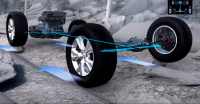 The all-wheel drive version of the transmission assumes the presence of an electromagnetic clutch, which activates the rear axle when necessary. Up to 50% of traction can be applied to it, with equal distribution to the wheels. When braking, the wheel inside the curve is clamped so that the traction vector control effect is created. It is only imitation on all-wheel drive Camry XV70, because the real system of traction distribution over wheels works on the automobiles RAV4 and Highlander. We are talking about an active rear differential. Thus, the Dynamic Torque Vectoring AWD system is not used on the Camry 70 with all-wheel drive.
The all-wheel drive version of the transmission assumes the presence of an electromagnetic clutch, which activates the rear axle when necessary. Up to 50% of traction can be applied to it, with equal distribution to the wheels. When braking, the wheel inside the curve is clamped so that the traction vector control effect is created. It is only imitation on all-wheel drive Camry XV70, because the real system of traction distribution over wheels works on the automobiles RAV4 and Highlander. We are talking about an active rear differential. Thus, the Dynamic Torque Vectoring AWD system is not used on the Camry 70 with all-wheel drive.
How the Camry 70 drives with all-wheel drive
The benefits of the Camry's all-wheel drive on dry asphalt are hard to see. The extra traction changes the feel of the steering wheel, as the connected rear axle helps to pass sharp turns and acceleration after a maneuver. The steering wheel simply doesn't get out of your hands. However, front-drive Camry with an atmospheric engine can not be called a car with excessive power, which grinds asphalt with a load exclusively on the front axle.
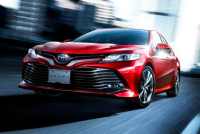 Four-wheel drive Camry 70 is heavier than front-wheel drive version by 81 kg that also influences its friskiness. It is clear even from the sound inside the moving car that all-wheel drive is less comfortable and noisy. For comparison, the Toyota Avalon in all-wheel drive version comes with improved noise isolation, so it seems more comfortable.
Four-wheel drive Camry 70 is heavier than front-wheel drive version by 81 kg that also influences its friskiness. It is clear even from the sound inside the moving car that all-wheel drive is less comfortable and noisy. For comparison, the Toyota Avalon in all-wheel drive version comes with improved noise isolation, so it seems more comfortable.
The changes become tangible when the Camry V70 AWD is driven on snow or ice-covered surfaces. When entering a corner, the rear axle is engaged, giving the driver more control over the vehicle. The effect is enhanced when using winter tires, but the car also clings to the road on all-season tires.
Price
Toyota's U.S. website states that all-wheel drive is available on the Camry 70 from the LE package. The price of such a car across the ocean is $25,000.
Camry 70 with all-wheel drive for Japan
On the domestic market, the Japanese have provided a hybrid power plant THS II with a 2.5-liter engine. The engine marked A25A-FXS, which is based on Atkinson cycle, it produces 178 hp. But the electric motor is "weakened" by 23 horses (120 hp versus 143). In total, there is still an increase in output, as the Toyota Camry 70 Hybrid produces 211 hp. Such a Camry with all-wheel drive is hybrid. It can be lithium-ion or nickel-metal hydride battery, everything depends on the configuration. The manufacturer declares fuel consumption at the level of 3.9 liters per 100 km of run. The transmission here is provided stepless, but with the mode of sequential switching. As a result, it creates the effect of automatic 6-speed automatic. Front-wheel drive in Kamri is permanent, but the rear drive is connected by a separate electric motor. Mechanical connection between the axles is not provided.
Such a Camry with all-wheel drive is hybrid. It can be lithium-ion or nickel-metal hydride battery, everything depends on the configuration. The manufacturer declares fuel consumption at the level of 3.9 liters per 100 km of run. The transmission here is provided stepless, but with the mode of sequential switching. As a result, it creates the effect of automatic 6-speed automatic. Front-wheel drive in Kamri is permanent, but the rear drive is connected by a separate electric motor. Mechanical connection between the axles is not provided.
There is a special designation for hybrid all-wheel-drive versions. Toyota has introduced the following variants - "E-Four" and "AWD-i". We are talking about conditional all-wheel drive, since the principle of the car is as follows: a separately standing electric motor (it is even a motor-generator) drives the rear axle through a gearbox with two gears.
Electric AWD in practice
In fact, the old all-wheel-drive Toyota Camry marked AWD-i did not even reach the level of all-wheel-drive with a clutch. Plus, the typical inability to simulate inter-axle locking. Relevant videos in the network can illustrate this incompleteness. Progress in this question was outlined only after 2010. It is quite possible, that the Japanese automobile manufacture giant will overcome own traditions and will leave on the new level of electric all-wheel drive.
Four-wheel drive Forty.
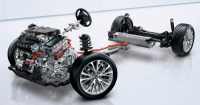 Specifications for the all-wheel-drive Toyota Camry 40:
Specifications for the all-wheel-drive Toyota Camry 40:
The engine's engine label is 2AZ-FE;
Power - 167 hp at 6,000 rpm;
torque - 224 N*m at 4,000 rpm;
environmental friendliness of the engine - 75% reduced toxic emissions (standards of 2005);
Fuel consumption by the example of cars Camry in a complete set 2.4 G Four 4WD - 9.4 liters (in the mode 10/15/100 km).
Hybrid XV40 can not be considered a full-fledged all-wheel drive car, the last were produced for the domestic (Japanese) market and equipped with a hybrid power plant with a 2.4-liter engine.

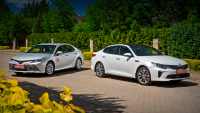
-rear-and-front-view-camera-6.png)

